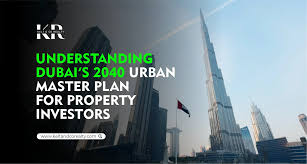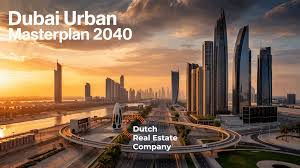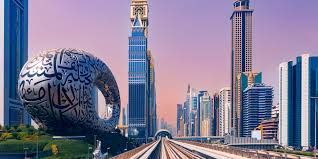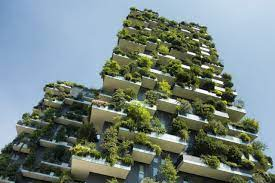Now Reading: Dubai’s Urban Master Plan 2040: Implications for Real Estate Development
-
01
Dubai’s Urban Master Plan 2040: Implications for Real Estate Development
Dubai’s Urban Master Plan 2040: Implications for Real Estate Development

Table of Contents
Launched in March 2021 by Sheikh Mohammed bin Rashid Al Maktoum, the Dubai 2040 Urban Master Plan is a strategic blueprint to transform Dubai into a sustainable, inclusive, and globally competitive city by 2040. As the seventh urban plan since 1960, it addresses a population projected to grow from 3.3 million (2020) to 5.8 million, with a daytime population of 7.8 million. With a focus on sustainability, livability, and economic diversification, the plan significantly impacts real estate development, offering opportunities and challenges for investors and developers. This analysis explores the plan’s key objectives, its implications for real estate, and strategies to align with its vision, drawing comparisons with Sharjah’s cost-efficient urban model.
1. Overview of Dubai 2040 Urban Master Plan

Key Objectives
- Sustainability: Dedicate 60% of Dubai’s land to nature reserves and rural areas, doubling green and recreational spaces.
- Mobility: Promote sustainable transport, with 55% of residents living within 800 meters of public transport and a “20-minute city” policy for 80% of daily needs accessible by walking or cycling.
- Economic Growth: Expand tourism and commercial land by 134% and economic zones to 168 sq.km, fostering non-oil sectors like technology, logistics, and tourism.
- Livability: Develop vibrant, inclusive communities with a 25% increase in education and healthcare facilities, integrated housing, and enhanced public amenities.
- Cultural Preservation: Upgrade heritage areas (e.g., Deira, Bur Dubai) while developing five urban centers: Deira/Bur Dubai, Downtown/Business Bay, Dubai Marina/JBR, Expo 2020 Centre, and Dubai Silicon Oasis Centre.
- Governance: Introduce Law No. 16 of 2023 for sustainable urban planning, supported by data-driven systems for transparency and faster approvals (60% reduction in project approval times).
Strategic Pillars
- People-Centric: Enhance happiness and well-being through inclusive, healthy neighborhoods.
- Connectivity: Expand public transport (e.g., Dubai Metro Blue Line, 140 stations by 2040) and green corridors for pedestrians and cyclists.
- Economy: Attract foreign investment and create 1.8 million jobs, boosting GDP by AED 300 billion.
- Environment: Reduce carbon footprint by 75% by 2050, with projects like Dubai Mangroves (100 million trees) and Jebel Ali Beach (6.6 km public beach).
Comparison to Sharjah

- Sharjah’s Urban Strategy: Sharjah’s Sustainable City and free zones (e.g., Sharjah Media City) prioritize affordability (AED 5,750–11,500 setup vs. Dubai’s AED 10,000–20,000) and sustainability, with lower-density developments. While Dubai’s plan targets global hubs, Sharjah focuses on family-friendly, SME-driven growth.
- Advantages: Dubai’s scale attracts high-net-worth investors, but Sharjah’s cost efficiency supports smaller developers, complementing Dubai’s vision.
2. Implications for Real Estate Development
Opportunities
- Premium Urban Centers
- Downtown/Business Bay: Enhanced as financial hubs, with Emaar’s billion-dirham expansions driving demand for luxury residences and commercial spaces. Property values may rise 8–12% annually.
- Dubai Marina/JBR: Positioned as tourism hubs, with projects like Palm Jebel Ali (80 hotels, 13.4 km) increasing demand for hospitality and retail properties.
- Expo 2020 Centre (District 2020): A mixed-use community with affordable housing and logistics hubs, appealing to mid-tier investors.
- Dubai Silicon Oasis: A technology hub, boosting demand for office spaces and innovation-driven residences.
- Example: A 3-bedroom apartment in Downtown Dubai (135.55 sq.m., AED 3–5 million) offers 7–9% rental yields, amplified by 2040-driven demand.
- Green and Sustainable Developments
- 60% Nature Reserves: Properties near green belts (e.g., Zazen Gardens, DAMAC Hills) command 10–15% value premiums due to demand for eco-friendly living.
- Green Corridors: Connect residential and commercial areas, increasing property appeal in JVC, Al Barsha, and Dubai South.
- Sustainability Laws: Law No. 16 of 2023 mandates green building standards, encouraging developers like ZāZEN Properties to adopt low-carbon designs, reducing long-term costs by 20–30%.
- Mixed-Use Communities
- Integrated developments (residential, commercial, recreational) in District 2020 and Dubai South align with the “20-minute city” policy, attracting families and professionals.
- Example: DAMAC’s Radisson Hotel DAMAC Hills supports tourism and commercial growth, offering 6–8% ROI for investors.
- Transport-Driven Growth
- Dubai Metro Blue Line (96 stations by 2030, 140 by 2040) and tram/bus expansions enhance connectivity to emerging areas like Dubai South and Silicon Oasis, boosting property values by 5–10%.
- Example: Properties near new metro stations in Al Barsha may see 15% value increases by 2030.
- Tourism and Hospitality
- A 134% increase in tourism land and 400% expansion of public beaches (e.g., Jebel Ali Beach) drive demand for hotels, resorts, and short-term rentals.
- Example: Palm Jebel Ali’s 80 hotels create opportunities for holiday home investments, with AED 1,520/year DET permits deductible for CT.
- Affordable Housing
- 17,400 residential plots for citizens and integrated housing complexes address population growth, appealing to mid-income buyers.
- Example: Wasl Group’s affordable housing projects, signed May 2025, align with the plan’s inclusivity goals.
Challenges
- Regulatory Compliance
- Supply Pressure
- A projected 76,000-unit residential supply in 2025 may temper price growth in oversupplied areas like JVC, requiring strategic location selection.
- Cost Escalation:
- Land and construction costs in premium areas (e.g., Downtown, AED 10,000/sq.m.) challenge smaller developers, unlike Sharjah’s lower costs (AED 5,000/sq.m.).
- DMTT for MNEs:
- Multinational developers face a 15% DMTT from January 1, 2025, impacting profitability for projects with global revenues ≥ €750 million.
Comparison to Sharjah
- Real Estate Dynamics: Sharjah’s Aljada (AED 639K–1M) and Masaar Village offer affordable, sustainable housing, contrasting with Dubai’s luxury focus. Sharjah’s lower costs reduce compliance burdens but limit global investor appeal.
- Implications: Sharjah’s model supports smaller developers, while Dubai’s plan drives premium, high-ROI projects.
WATCH MORE: https://m.youtube.com/watch?v=WK_9yjwdyUQ&t=29s
READ MORE: Green Buildings in Dubai: Leading the Sustainable Real Estate Movement in 2025






















